On show at the City Hall from 5 to 28 May 2015, Le Corbusier – Modern Architect Giant is a major retrospective on the life and work of the celebrated Swiss-French architect, designer, urban planner, writer and artist. Sylvia Chan reviews.

May 7th, 2015
Top Photo: Atelier de Le Corbusier. Photo: Peter Willi and Albin Salaün. Fondation Le Corbusier ©FLC/ADAGP, 2015 and Le French May
Le Corbusier – Modern Architect Giant ties together the multi-facets of Le Corbusier’s busy creative life, hardly marked by any distinctive style but a series of changes and revolutionary moves. Divided into five sections, the exhibition takes visitors through the life of the controversial modern architect who split his time between architectural design, urban planning, writing, and painting.
The different zones of the exhibition are defined by partitions with colours that echo the Pessac Housing, an early work of the architect designed in the 1920s, experimenting with new domestic and aesthetic ideas for housing workers. Pessac Housing was condemned by architectural historian Henry-Russell Hitchcock as a “serious disappointment” that did not suit the lives of workers. The reference to the Pessac Housing in the exhibition subtly pays tribute to the life of Le Corbusier as an audacious reformer.
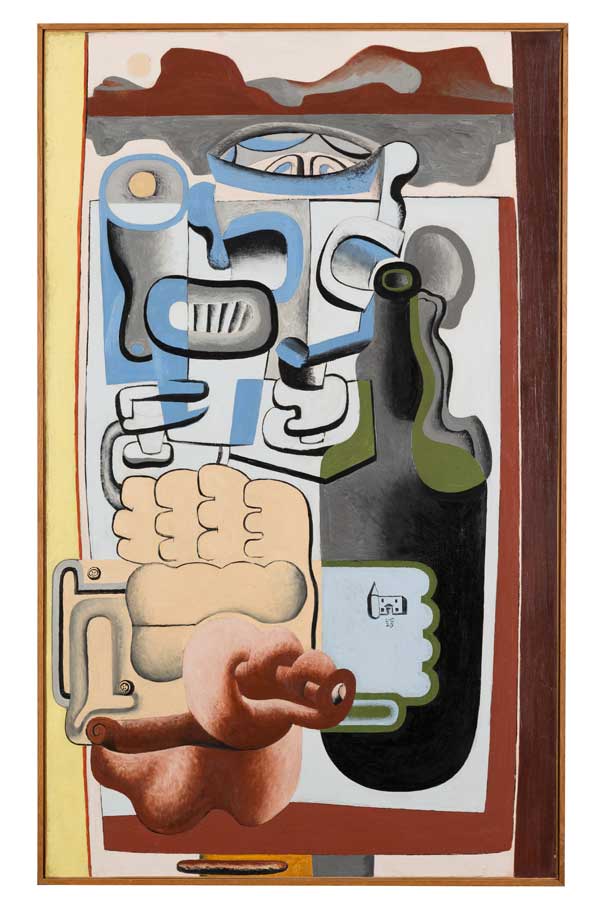
Art piece by Le Corbusier. Photo: Fondation Le Corbusier ©FLC/ADAGP, 2015 and Le French May
The journey of Le Corbusier as a creator began in Chaux-de-Fonds where he was born. Charles-Édouard Jeanneret-Gris, who eventually grew up to be known as Le Corbusier, was trained as a watch engraver and developed an interest in painting and architecture soon after he became the disciple of painter and architect, L’Eplattenier.

Art piece by Le Corbusier. Photo: Fondation Le Corbusier ©FLC/ADAGP, 2015 and Le French May
Le Corbusier’s trips to Central Europe and the Mediterranean in 1907 nailed his career in architecture. The first section of the exhibition showcases the photographs and sketches of his early works, highlighting the architect’s sensitivity to material, form, society, and culture.
One of the main works that illustrates the openness of the architect to find influence from different cultures is Villa Schwob, completed in Chaux-de-Fonds in 1917 before Le Corbusier moved to Paris. Pascal Mory, curator of the exhibition, says, “Villa Schwob was designed after Le Corbusier’s trip to Istanbul. You can see references to Hagia Sophia.”
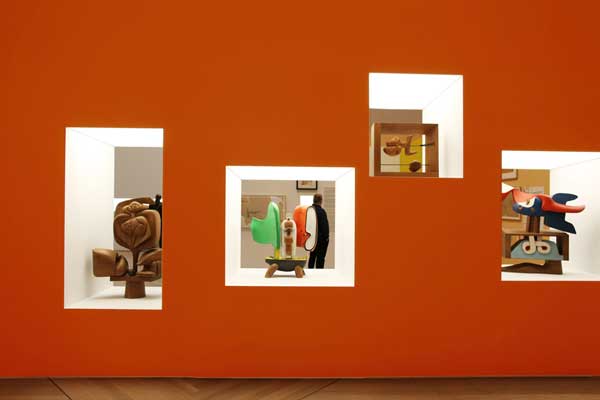
Art piece by Le Corbusier. Photo: Fondation Le Corbusier ©FLC/ADAGP, 2015 and Le French May
Another highlight of this section is the dom-ino house, or the house of innovation. Designed between 1914 and 1915 during WWI, the prototype was meant to be easily rebuilt for mass housing after the war. In the dom-ino house prototype, the open floor slabs are supported by only six columns on the edges, and a stairway connects the different floors. The prototype resurfaces not only in a number of Le Corbusier’s later works but also in modern buildings. Mory remarks, “this resembles 95% of what we are doing today.”

Unité d’Habitation de Marseille. Photo: Paul Koslowski. Fondation Le Corbusier ©FLC/ADAGP, 2015 and Le French May
The subsequent sections of the exhibition display both conceptual, as well as realised architectural and planning works of Le Corbusier in different parts of the world, as well as his paintings, sculptures and tapestries.
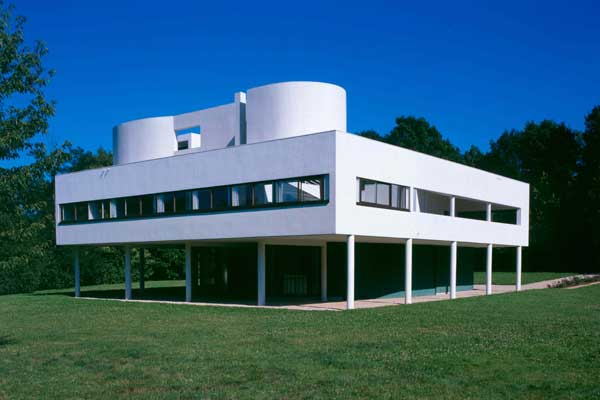
Villa Savoye. Photo: Paul Koslowski. Fondation Le Corbusier ©FLC/ADAGP, 2015 and Le French May
The Paris: The Years of Purism (1917 – 1929) section highlights the architect’s ambition to surpass cubism and create new spatial experiences. Projects in this section, including Villa Savoye (1929) and Pessac Housing (1924) examine Le Corbusier’s idea of a house as a machine for living.
The Poetics of Vernacular and Major Projects (1930 – 1945) displays works that steer away from industrial rationalism. For example, drawings of the Le Sextant house (1935) render the tactile quality of the building that contrasts with the rationality of the Pessac Housing. The Maison Errazuriz (1930), an unbuilt project designed for Chile, envisioned a house of stone and wood on the cliff side.
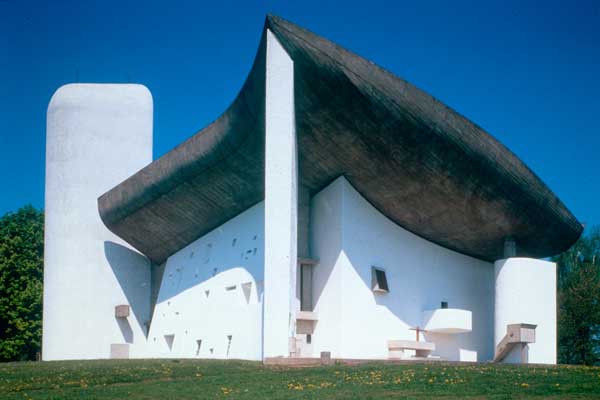
Chapel of Notre Dame du Haut, Ronchamp (1953). Photo: Paul Koslowski. Fondation Le Corbusier ©FLC/ADAGP, 2015 and Le French May
The Artistic Synthesis (1945 – 1957) and the Retrospection and Creativity in Final Works (1957 – 1965) sections showcase the more renowned works of Le Corbusier, including: Plan Voisin (1925), where the architect proposed to demolish the centre of Paris to make way for regular blocks for a hygienic city; Unité d’habitation (1947), a vertical city encompassing housing, shops, medical facilities, a garden terrace, a club, a kindergarten, a gym and a pool; the chapel of Notre Dame du Haut in Ronchamp (1953), a concrete structure in a fluid form exploring the art of lighting; as well as the city of Chandigarh (1952), planned with the idea to bring light, air, and greenery to the city in mind.
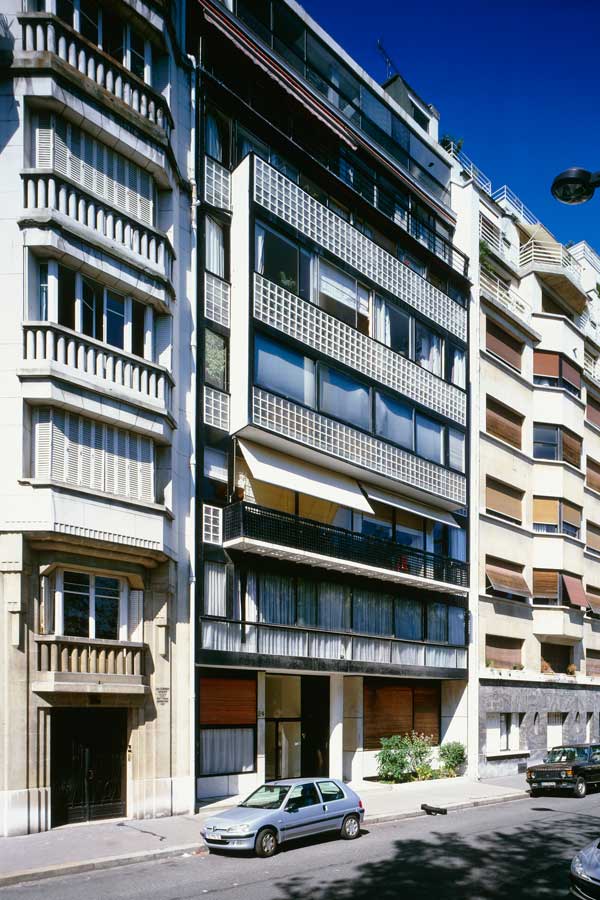
Immeuble Molitor, Appartement-Atelier de Le Corbusier. Photo: Olivier Martin Gambier. Fondation Le Corbusier ©FLC/ADAGP, 2015 and Le French May
Towards the end of the exhibition, one would see ideas conceived in Le Corbusier’s earlier unbuilt projects resurface. An example would be the Museum of Unlimited Growth, a conceptual project by Le Corbusier from 1931. Envisioned as a museum in concentric squares that would grow with the collection, the project materialized in the creator’s later works, including the National Museum of Western Art in Tokyo (1957) and the Government Museum and Art Gallery in Chandigarh (1947).

Art piece by Le Corbusier. Photo: Fondation Le Corbusier ©FLC/ADAGP, 2015 and Le French May
The repertoire of work on show at Le Corbusier – Modern Architect Giant is a testimony to Le Corbusier’s career underlined by non-conformity, determination, and above all, changes. As Mory says, “Le Corbusier had many rebirths. He always found new ways to create.”
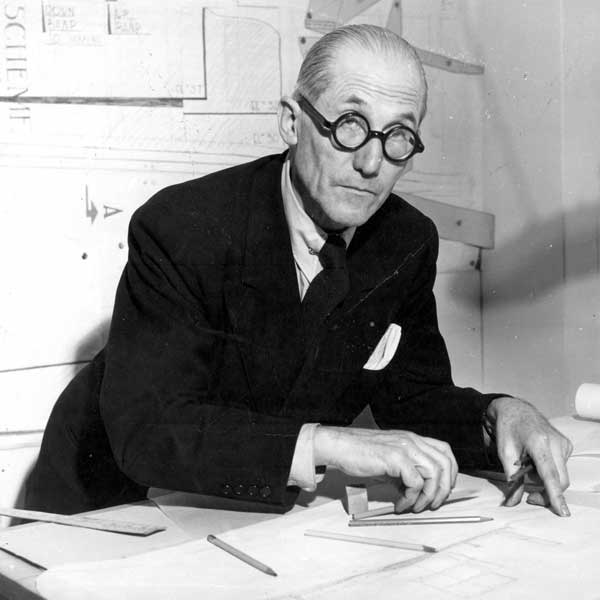
Le Corbusier, 1887-1965. Photo: Fondation Le Corbusier ©FLC/ADAGP, 2015 and Le French May
Le Corbusier – Modern Architect Giant runs from 10am – 8pm, daily, until 28 May 2015 at Hong Kong City Hall. Free Admission.
French May
frenchmay.com
A searchable and comprehensive guide for specifying leading products and their suppliers
Keep up to date with the latest and greatest from our industry BFF's!

In this candid interview, the culinary mastermind behind Singapore’s Nouri and Appetite talks about food as an act of human connection that transcends borders and accolades, the crucial role of technology in preserving its unifying power, and finding a kindred spirit in Gaggenau’s reverence for tradition and relentless pursuit of innovation.

Following its successful inaugural event in early 2024, the Vietnam International Trade Fair for Apparel, Textiles, and Textile Technologies (VIATT) is gearing up for its next instalment in 2025.

Transplanting the essence of one Indian capital city into another, RSDA has retrofitted a family home with a finely tuned focus on colour, material and furniture.
Launched last night in Sydney, Cult presents Cult Design Icons. An exhibition curated by Australia’s top design influencers, it is a comprehensive celebration of design at its most timeless and transcendent.
The internet never sleeps! Here's the stuff you might have missed

Herman Miller’s Bay Work Pod isn’t just about creating a cosy nook amidst the expanse of an open office – it’s about fostering a genuinely inclusive environment where everyone feels empowered to do their best work. Could this be the pod that finally gets it right?

The Heffron Centre in Maroubra, Sydney, stands as a testament to how authentic public art powered by collaborative project teams can transform urban spaces.